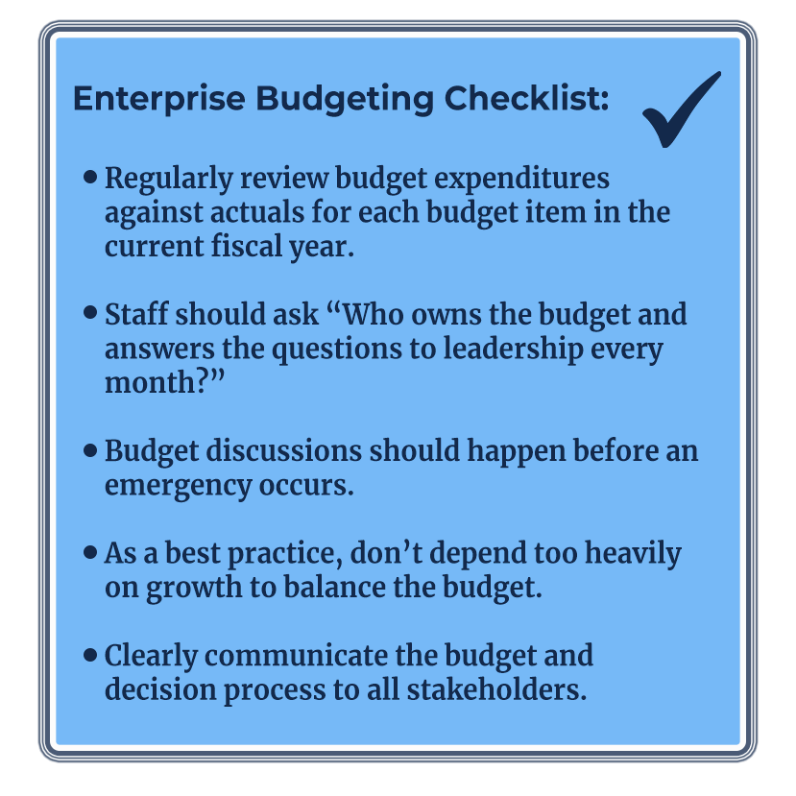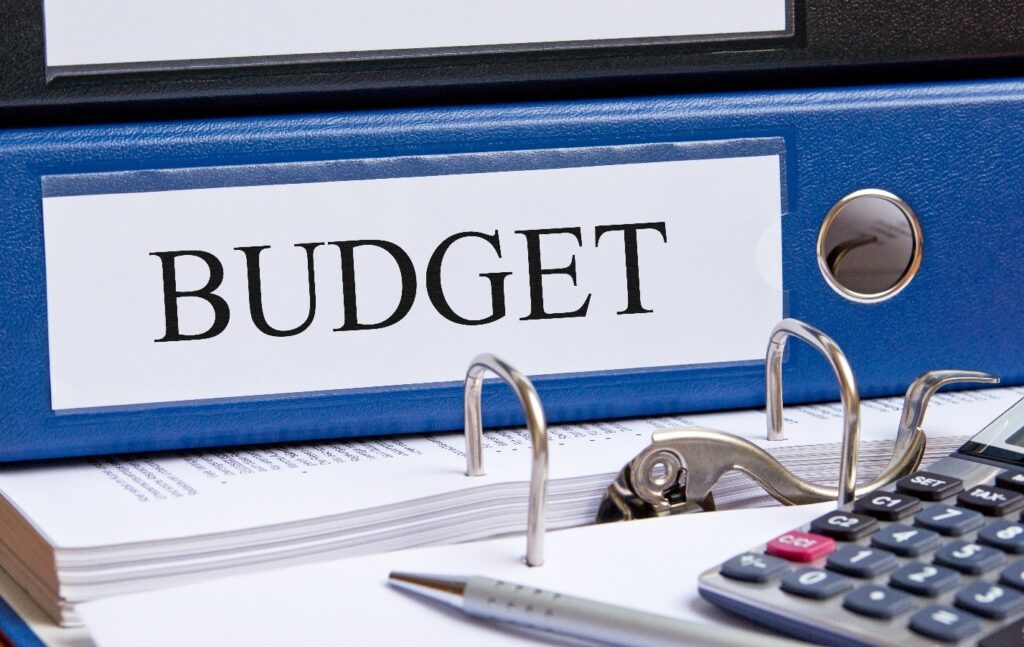With the change of season, most units of government have started their budget process for the next fiscal year. In addition to their general fund budget, units need to be developing and refining their water and wastewater enterprise budgets. It may sound simple to take the last few years’ budgets and project both expenses and revenues but considering some important steps before recycling the same budget is very important.
The first step is to start regularly (ideally monthly) reviewing your budget against actuals in this current fiscal year. It doesn’t benefit the unit to repeat the content or even the structure of a budget that is not currently working. Units should look at both the total numbers as well as how they are allocated within the budget. Think of this as looking at “buckets.” For example, the “bucket” for the chemical budget might be off for any number of valid reasons, but the overall enterprise budget could be on or close to budget. It’s important to look at each bucket—whether they are considerably under or over budget—and align them with actual expenditures. Additionally, the timing of expenses in the budget matters. It is unlikely spending or revenue will be distributed evenly over the 12-month period, so the budget should reflect reality. When expenses are checked against the budget over the course of the fiscal year, they should match both the timing and amount needed for each budget and therefore the finances should stay on track.
After gathering the last few years’ budgets and tracking them by month against actuals, the staff needs to have a frank discussion about who can really impact the success or failure of the budget and ultimately the enterprise. Staff should ask, “Who owns the budget and answers the questions to leadership every month?” Operations staff might view this as an accounting function, but it is the operations staff who can impact the actual spending. Members of the accounting team need to work with the operations team. Keep in mind that the operations team are likely less comfortable with budgeting and expense reporting than the accounting team. Explain the process and work as an enterprise team to identify opportunities to control or reduces expenses. Show the operations team the benefits of having a good budget. Remember, at the end of the day, the operations team has to provide water or wastewater service and even with the best planning, unexpected needs always arise. So, part of this discussion should be how the enterprise budget will address these unexpected needs. Including some contingency in some of the budget buckets may make sense. Consideration for using retained cash on hand as an alternative for significant unexpected expenses should also be discussed. Most importantly though, budget discussions should happen before an emergency occurs so the team is on the same page. Regular check-ins can also help mitigate budget challenges related to unexpected expenses.
 As the expense side of the budget is discussed, staff must also look to the revenue side. Revenue forecasting can be a daunting task, depending on the economic demographics of the community. If the enterprise significantly depends on industrial or commercial revenue to help balance the budget, think about the risk should one or more of the major customers shut down. If most of the revenue is generated by residential rate income, other considerations such as ability to pay, the potential of decreased use, or even loss of customers must be part of the discussion. Although growth of the service population may contribute to revenues, it also comes with added expenses and may not be predictable. As a best practice, don’t depend too heavily on growth to balance the budget.
As the expense side of the budget is discussed, staff must also look to the revenue side. Revenue forecasting can be a daunting task, depending on the economic demographics of the community. If the enterprise significantly depends on industrial or commercial revenue to help balance the budget, think about the risk should one or more of the major customers shut down. If most of the revenue is generated by residential rate income, other considerations such as ability to pay, the potential of decreased use, or even loss of customers must be part of the discussion. Although growth of the service population may contribute to revenues, it also comes with added expenses and may not be predictable. As a best practice, don’t depend too heavily on growth to balance the budget.
Finally, once the enterprise staff has developed a good budget, the budget must be effectively communicated to all stakeholders—leadership of the unit, ratepayers, employees, and others. The communication process is critical for gaining and maintaining trust. Be prepared to tell a good story about how the team worked together to develop the budget and what drove the decision-making process. This transparency will help stakeholders have confidence that the enterprise team has both prepared for emergencies and will spend future funds wisely.


